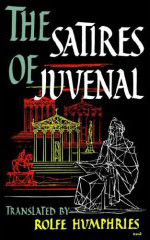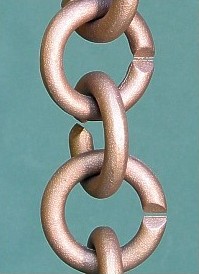Last month | Next monthClassical Month in Washington is a monthly feature. If there are concerts you would like to see included on our schedule, send your suggestions by e-mail (ionarts at gmail dot com). Happy listening!December 1, 2007 (Sat)
7:30 pmBellini,
I Capuleti e i MontecchiOpera Bel CantantiRandolph Road Theater (Silver Spring, Md.)
December 1, 2007 (Sat)
8 pmNational Symphony OrchestraHan-Na Chang (cello, Elgar concerto) and Saint-Saëns Organ Symphony
Kennedy Center Concert Hall
Review -- Michael Lodico (
Ionarts, November 30)
December 1, 2007 (Sat)
8 pmBaltimore Symphony OrchestraMusic Center at Strathmore
Review -- Tim Smith (
Baltimore Sun, December 1)
December 2, 2007 (Sun)
3 pmVienna Boys ChoirMusic Center at Strathmore
Review -- Grace Jean (
Washington Post, December 4)
December 2, 2007 (Sun)
3 pmBellini,
I Capuleti e i MontecchiOpera Bel CantantiRandolph Road Theater (Silver Spring, Md.)
December 2, 2007 (Sun)
4 pmMarcolivia Duo, piano [FREE]
Phillips CollectionDecember 2, 2007 (Sun)
5:30 pmBen Heppner, tenorShriver Hall (Baltimore, Md.)
Review -- Charles T. Downey (
Ionarts, December 4)
December 2, 2007 (Sun)
6:30 pmUniversity of Maryland Opera Studio [FREE]
John Musto,
Later the Same EveningNational Gallery of ArtReview -- Michael Lodico (
Ionarts, November 20)
December 2, 2007 (Sun)
7:30 pmA Rococo Noël
Opera Lafayette (with Four Nations Ensemble and Julie Boulianne)
La Maison Française
Review -- Michael Lodico (
Ionarts, December 4)
December 2, 2007 (Sun)
8 pmJCCGW Symphony OrchestraJewish Community Center of Greater Washington
December 3, 2007 (Mon)
7:30 pmKonrad Jarnot (baritone) and Alexander Schmalcz (piano)Vocal Arts Society
Kennedy Center Terrace Theater
Review -- Michael Lodico (
Ionarts, December 6)
December 3, 2007 (Mon)
8 pmJethro TullMusic Center at Strathmore
Review -- Charles T. Downey (
Ionarts, December 5)
December 4, 2007 (Tue)
12:10 pmNoontime Cantata:
Nach dir, Herr, verlanget mich, BWV 150 [FREE]
Washington Bach Consort (Neil Weston, organ)
Church of the Epiphany (1317 G Street NW)
December 4, 2007 (Tue)
7:30 pmKalichstein-Laredo-Robinson Trio and Miami String QuartetKennedy Center Terrace Theater
Review -- Robert Battey (
Washington Post, December 6)
December 4, 2007 (Tue)
8 pmAlex Ross, lecture and book signing
Evolution Contemporary Music Series
An die Musik LIVE (Baltimore, Md.)
December 5, 2007 (Wed)
8 pmTurtle Island String Quartet: Solstice Celebration
Music Center at Strathmore
December 6, 2007 (Thu)
7:30 pmTchaikovsky,
The Queen of SpadesKirov Opera
Kennedy Center Opera House
Review -- Charles T. Downey (
Ionarts, December 13)
December 6, 2007 (Thu)
7:30 pmSuspicious Cheese LordsResidence of the Swiss Ambassador (2900 Cathedral Avenue NW)
December 6, 2007 (Thu)
8 pmPhiladelphia OrchestraWPAS
Kennedy Center Concert Hall
Review -- Michael Lodico (
Ionarts, December 9)
December 7, 2007 (Fri)
7:30 pmChristmas Concert for Charity [FREE]
Basilica of the National Shrine of the Immaculate ConceptionDecember 7, 2007 (Fri)
7:30 pmHandel,
M-WordBaltimore Symphony OrchestraMeyerhoff Symphony Hall (Baltimore, Md.)
December 7, 2007 (Fri)
8 pmKathleen Battle (soprano) and Cyrus Chestnut (piano)WPAS
Kennedy Center Concert Hall
Review -- Andrew Lindemann Malone (
Washington Post, December 10)
December 7, 2007 (Fri)
8 pmHandel,
M-WordAmerican Opera Theater
Georgetown University, Davis Arts Center
Review -- Michael Lodico (
Ionarts, December 10)
December 7, 2007 (Fri)
8 pmWashington Bach Consort: Christmas OratorioMusic Center at Strathmore
Review -- Mark J. Estren (
Washington Post, December 10)
December 7, 2007 (Fri)
8 pmKing's Singers: Joy to the WorldGeorge Mason University Center for the Arts
December 8, 2007 (Fri)
8 pmHandel,
M-WordBaltimore Symphony OrchestraMeyerhoff Symphony Hall (Baltimore, Md.)
December 8, 2007 (Sat)
8 pmA Child’s Christmas in Wales
Dylan Thomas classic with music by Peter Warlock, Chinary Ung, George Crumb
21st Century ConsortSmithsonian American Art Museum
Review -- Joe Banno (
Washington Post, December 10)
December 8, 2007 (Sat)
8 pmJerusalem Quartet [FREE]
Library of CongressDecember 8, 2007 (Sat)
8 pmAlain Planès, piano
Music by Haydn, Schubert, Debussy, Janáček
An die Musik LIVE! (Baltimore, Md.)
December 8, 2007 (Sat)
8 pmBenefit Concert: Renée FlemingBaltimore Opera
Review -- Tim Smith (
Baltimore Sun, December 10)
December 8, 2007 (Sat)
8 pmHandel,
M-WordAmerican Opera Theater
Georgetown University, Davis Arts Center
December 8, 2007 (Sat)
8 pmHandel,
M-WordBaltimore Symphony Orchestra
Music Center at Strathmore
December 9, 2007 (Sun)
2 pmMessiah Sing-AlongKennedy Center Concert Hall
December 9, 2007 (Sun)
4 3 pmAlain Planès, piano
FAESCongregation Beth-El (Bethesda, Md.)
Review -- Charles T. Downey (
Ionarts, December 11)
December 9, 2007 (Sun)
3 pmVerdi,
OtelloKirov Opera
Kennedy Center Opera House
Review -- Charles T. Downey (
Ionarts, December 14)
December 9, 2007 (Sun)
3 pmBritten,
A Boy Was Born and
St. NicholasCantate Chamber SingersSt. Paul's Lutheran Church (4900 Connecticut Avenue NW)
December 9, 2007 (Sun)
4 pmIvan Ilić, piano [FREE]
Phillips CollectionDecember 9, 2007 (Sun)
4 pm
Piano Society of Greater Washington: Recital
Calvary Lutheran Church (Silver Spring, Md.)[POSTPONED TO DECEMBER 16]
December 9, 2007 (Sun)
4:30 pm
Dugg McDonough, Ordinary People [FREE]
Maryland Opera Studio (New Opera Reading)
Clarice Smith Performing Arts Center [POSTPONED TO FEBRUARY 2008]
December 9, 2007 (Sun)
5 pmMarcos Granados (flute), Lauren Skuce (soprano), Oren Fader (guitar)
Embassy SeriesResidence of the Venezuelan Ambassador (2443 Massachusetts Avenue NW)
December 9, 2007 (Sun)
5:30 pmYefim Bronfman, pianoShriver Hall (Baltimore, Md.)
Review -- Tim Smith (
Baltimore Sun, December 11)
December 9, 2007 (Sun)
6 pmEmerson String QuartetMusic by Beethoven, Bright Sheng, Brahms
Smithsonian Resident Associates
National Museum of Natural History
Review -- Michael Lodico (
Ionarts, December 15)
December 9, 2007 (Sun)
6:30 pmNational Gallery Orchestra [FREE]
All-Grieg program (Norwegian Christmas)
National Gallery of ArtDecember 9, 2007 (Sun)
8 pmPomerium (Creator of the Stars: Christmas Music from the Old World)
Friends of MusicDumbarton Oaks
December 10, 2007 (Mon)
8 pmPomerium (Creator of the Stars: Christmas Music from the Old World)
Friends of MusicDumbarton Oaks
December 11, 2007 (Tue)
12:10 pmJacob Clark, piano [FREE]
Church of the Epiphany (1317 G Street NW)
December 11, 2007 (Tue)
7:30 pmTchaikovsky,
The Queen of SpadesKirov Opera
Kennedy Center Opera House
December 12, 2007 (Wed)
7:30 pmVerdi,
OtelloKirov Opera
Kennedy Center Opera House
December 12, 2007 (Wed)
7:30 pmSecond Shepherds' PlayFolger Consort (nightly, through December 30)
Folger Shakespeare Library
Review -- Charles T. Downey (
Ionarts, December 18)
December 13, 2007 (Thu)
7:30 pmMariusz Kwiecień (baritone) and Howard Watkins (piano)
Vocal Arts SocietyEmbassy of Austria
Review -- Ronni Reich (
Washington Post, December 15)
December 14, 2007 (Fri)
7:30 pmTchaikovsky,
The Queen of SpadesKirov Opera
Kennedy Center Opera House
December 14, 2007 (Fri)
7:30 pmWael Farouk, piano
Embassy SeriesResidence of the Egyptian Ambassador (2301 Massachusetts Avenue NW)
December 14, 2007 (Fri)
8 pmFormosa Quartet [FREE]
Stradivari Anniversary Concert
Library of CongressReview -- Charles T. Downey (
Ionarts, December 16)
December 15, 2007 (Sat)
1 pmWashington Chorus: Music for ChristmasKennedy Center Concert Hall
December 15, 2007 (Sat)
2 pmGabriela Montero, pianoWPAS
Sidney Harman Hall
Review -- Charles T. Downey (
Ionarts, December 17)
December 15, 2007 (Sat)
8 pmChantry: A Royal Renaissance Christmas
Tallis,
Missa Puer natus est; Byrd,
Propers for Christmas DaySt. Paul's K Street
December 16, 2007 (Sun)
1 pmMaster Chorale of Washington: Christmas Candlelight ConcertKennedy Center Concert Hall
Review -- Joe Banno (
Washington Post, December 19)
December 16, 2007 (Sun)
2 pmKennedy Center Chamber PlayersKennedy Center Terrace Theater
Review -- Tim Page (
Washington Post, December 18)
December 16, 2007 (Sun)
3 pmVerdi,
OtelloKirov Opera
Kennedy Center Opera House
December 16, 2007 (Sun)
3 pmRecital,
Piano Society of Greater Washington [FREE]
Calvary Lutheran Church (Silver Spring, Md.)
December 16, 2007 (Sun)
3:30 pmCommunity Carol Sing
Capitol City Symphony and Congressional Chorus
Atlas Arts Center
December 16, 2007 (Sun)
4 pmHaskell Small, piano [FREE]
Musica Callada (music by Federico Mompou)
Phillips CollectionReview -- Stephen Brookes (
Washington Post, December 18)
December 16, 2007 (Sun)
6 pmChantry: A Royal Renaissance Christmas
Tallis,
Missa Puer natus est; Byrd,
Propers for Christmas DaySt. Bernadette (Silver Spring, Md.)
December 16, 2007 (Sun)
6:30 pmLeipzig Quartet [FREE]
Beethoven's Birthday
Embassy SeriesNational Gallery of ArtReview -- Charles T. Downey (
Ionarts, December 19)
December 17, 2007 (Mon)
7 pmChoral Arts Society of Washington: Christmas MusicKennedy Center Concert Hall
Review -- Stephen Brookes (
Washington Post, December 20)
December 17, 2007 (Mon)
7:30 pmBishop Hilarion Alfeyev, Christmas Oratorio [FREE]
WORLD PREMIERERussian Ministry of Defense Symphony Orchestra
Choir of the National Tretyakov Art Gallery
Basilica of the National Shrine of the Immaculate ConceptionDecember 18, 2007 (Tue)
12:10 pmEpiphany Choir: Christmas Concert [FREE]
Church of the Epiphany (1317 G Street NW)
December 18, 2007 (Tue)
7:30 pmJennifer Stumm (viola) and Finghin Collins (piano)Kennedy Center Terrace Theater
Review -- Michael Lodico (
Ionarts, December 21)
December 19, 2007 (Wed)
7:30 pmSt. Luke's Chamber EnsembleBach, Brandenburg Concertos
Kennedy Center Terrace Theater
Review -- Charles T. Downey (
Ionarts, December 21)
December 19, 2007 (Wed)
7:30 pmSuspicious Cheese LordsWith Constance Whiteside, harp
St. Paul's Lutheran Church (4900 Connecticut Avenue NE)
December 20, 2007 (Thu)
7 pmHandel, M-WordNational Symphony Orchestra
Kennedy Center Concert Hall
Review -- Tim Page (
Washington Post, December 21)
December 20, 2007 (Thu)
7:30 pmSt. Luke's Chamber EnsembleBach, Brandenburg Concertos
Kennedy Center Terrace Theater
December 21, 2007 (Fri)
7:30 pmWashington ChorusMusic Center at Strathmore
December 21, 2007 (Fri)
8 pmA Baroque Christmas
City Choir of WashingtonRachel M. Schlesinger Center for the Arts (Alexandria, Va.)
December 21, 2007 (Fri)
8 pmHandel, M-WordNational Symphony Orchestra
Kennedy Center Concert Hall
December 22, 2007 (Sat)
1 pmWashington Chorus: Music for ChristmasKennedy Center Concert Hall
December 22, 2007 (Sat)
2 and 4 pmChoral Arts Society of Washington: Family Christmas ConcertKennedy Center Terrace Theater
December 22, 2007 (Sat)
4 pmMaster Chorale of Washington: Christmas Candlelight ConcertKennedy Center Concert Hall
December 22, 2007 (Sat)
8 pmHandel, M-WordNational Symphony Orchestra
Kennedy Center Concert Hall
December 22, 2007 (Sat)
8 pmHandel,
M-WordNational Philharmonic
Music Center at Strathmore
Review -- Joe Banno (
Washington Post, December 25)
December 23, 2007 (Sun)
1 pmHandel, M-WordNational Symphony Orchestra
Kennedy Center Concert Hall
December 23, 2007 (Sun)
3 pmHandel,
M-WordNational Philharmonic
Music Center at Strathmore
December 23, 2007 (Sun)
6:30 pmChris Brubeck's Triple Play [FREE]
Jazz and holiday favorites
National Gallery of ArtDecember 23, 2007 (Sun)
7 pmChoral Arts Society of Washington: Christmas MusicKennedy Center Concert Hall
December 24, 2007 (Mon)
1 pmChoral Arts Society of Washington: Christmas MusicKennedy Center Concert Hall
December 29, 2007 (Sat)
8 pmSalute to ViennaStrauss Symphony of America
Kennedy Center Concert Hall
December 30, 2007 (Sun)
6:30 pmNational Gallery Orchestra [FREE]
New Year's Concert, with guest conductor José Serebrier
National Gallery of ArtDecember 31, 2007 (Mon)
8:30 pmNew Year's Eve at the Kennedy CenterKennedy Center Concert Hall
































































